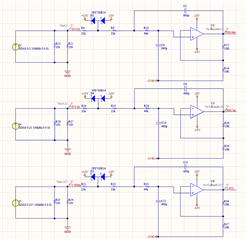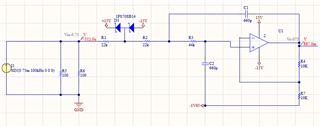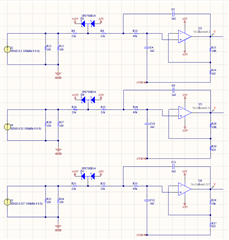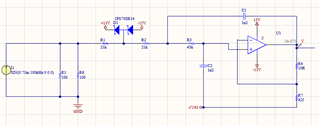Dear members,
I've used OPA4172 for making a Sallen-Key second order low passs filter. I need to make 4 filters because the input scaling is different among them:
0.075A for Vmax=4000 Vmin=-4000
0.2A for Imax=100 Imin=-100
0.21A for Imax=200 Imin=-200
0.257A for Imax=1286 Imin=-1286
this is the definition of my voltage and current sensors. You can see the design below.


the cut-OFF frequency is 3.5KHz. With simulation I can see that this design is working properly. Now my question is if I can change the design to have one generic for all the scales. I know that I can easily connect them to different ports of the MICRO and then there won't be any problem. But is there any way to have one generic filter for all of them?
Regards
Farzaneh



